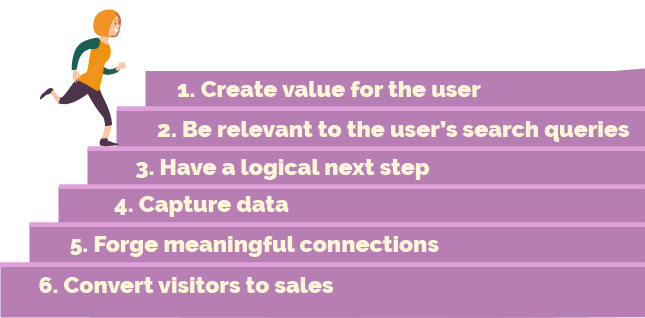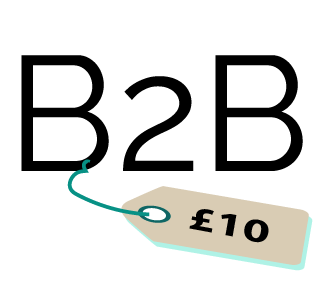Wouldn’t it be great if we lived in a world where people created content purely for the sake of helping others?
And yet, that world will never exist.
Why?
Because human beings naturally have a higher motive at heart behind everything they do. That is, they want to be recognised; to make money; to be admired.
When we create and share our own social media content, what are we actually doing?
Naturally, we’re expressing our personality and communicating with others. But we’re also basically saying; ‘Look at me. Look at what I’m doing.’
Would we post that image or write that Facebook status if there wasn’t an audience to speak to?

When you post an opinion your purpose is to connect with a certain audience about a particular subject. Whether it be on Twitter, as a Facebook comment or in a detailed blog post.
Most importantly, you are looking for a response and recognition.
Businesses work in exactly the same way.
When businesses share content they are also looking to achieve a goal with that effort.
We want customer attention, which we can then turn into sales.
But here is the key question: If you are working so hard to create content, why are you not working just as hard to convert your content traffic into sales?
Businesses often miss the point of content marketing: to turn traffic into sales
You create content so you can rank highly on search engines, right?
As you rank higher, you earn an audience that listens to you, rather than somebody else.
The best way to envisage this ranking fight is to picture Google as the school popularity contest of the world.

As soon as you start to climb to the top of the ladder, more and more people want to engage and be associated with you. You are suddenly popular.
The higher you rank, the more people are likely to recognise you and believe you to be a figure of authority.
For businesses, the more reputable you are, the more likely consumers are to trust you, and therefore spend their hard-earned cash with you.
Content marketing is about building connections
We know that the best content marketing has the purpose of forming authentic connections with people. This is achieved through answering their search queries and understanding user intent.
The content should have a narrative which guides the user towards a particular endpoint. This endpoint must answer a question for the user. Or provide something that will genuinely help them to achieve their goals.

For example, someone may be thinking; ‘I want to knit my friend some baby booties, how can I do it?’. They would search online for ‘how to knit baby booties,’ or another relevant search term.
Companies tap into this need by creating targeted and relevant content. This content is related to their product or service in the hopes that it forges a connection with the user.
To be good at content marketing as a business, your content needs to be useful. After all, your content is what will encourage customers to start relating your product. In turn, when they think of making a particular purchase, they’ll think of using your business.
Going back to the above example. An online craft store that sells knitting equipment may see the demand for knitting guidance from their customers.
By publishing content which provides answers to customer search queries, they’ll increase the number of visitors that come to their website. In turn, if the visitors have found the content helpful, then they may make a purchase. This may not be immediate but when they require products associated with your company, they’ll think of this company first.
Therefore, that company may have not have gained the end sale without that content being there. This is why content marketing is so important.
As an example, the individual looking to knit some baby booties may have completed their project using the craft store’s guides. As such, they’ve decided to make a matching cardigan. When it comes to needing some more wool, they are more likely make a purchase through the same craft website they learnt how to knit from. Why? Because they have been previously offered valuable guidance.

Therefore, any content you create needs to be completely relevant to your business area. Or else customers may seek what they need elsewhere. Of course customers will read the relevant content. However, without other related articles of value, they’ll have nowhere else to go and will promptly leave your site. This may lead to higher bounce rates for your website.
Having a high number of visitors landing on your content might seem great. But it’s unlikely that they’ll purchase a product or service that’s unrelated to their search query.
Therefore it is important that you focus on creating content which is relevant to what you do or sell.
Creating relevant content which is important to your business targets is essential
It’s vital that you only create content that’s relevant to your business area, otherwise you will waste your time on creating pages that have no return on investment.
Take my site as an example. As a marketing consultant, it would be pointless for me to create content which offers information on worldwide shipping, as the people reading it are unlikely to purchase any of the marketing services I have to offer.

Companies focus on creating content which is relevant to them as a logical extension of what they have to offer. By sharing content that’s relevant to them, they’re proving their authority as the best in the business, and, as a result, will have an increase in the number of internet users purchasing their products or services.
In other words, creating content for anything outside of your core focus is irrelevant to your business as it won’t help you increase your sales.
And, as a serious investment for businesses, you want to make sure that the time you put into your content marketing is driving results.
Valuable content is important, but so is relevancy. If at first the content doesn’t seem relevant to a user’s search query, then they’re not going to click and read through to see if it offers any value to them.
Just think of why you clicked on this blog. Did it catch your attention because it seemed relevant to your search needs? Then did you think it could add value to you or your business?
That’s the effect you want with your content marketing.
The best content leads towards the sale
Having relevant content is important. But so is content with a clear direction and action, rather than simply serving to exist.
Content should always be encouraging the user to move onto the next step; to learn more, sign up to something or purchase a product or service.
If a content’s purpose is simply to exist, then it’s pointless and a waste of your time.
It’s like having a fishing rod without a reel – you might get a fish on the hook, but you’ll never be able to catch it unless you can reel it in.

So, just like a fishing rod needs a reel, a piece of content needs to lead somewhere to have purpose.
You may know plenty of businesses and public figures that create some amazing content, that draws in lots of traffic every day, but leads to nowhere.
But what is the point of this traffic if it doesn’t do anything?
It goes back to our use of Instagram; what is the point of posting a picture if you don’t get any feedback? What value has it created for the viewer, or for you?
The purpose of great content
There are a few key things that your content should be doing in order for it to have purpose:

Take a look at your website and the content you create. Does it follow these six steps?
If it doesn’t, then analyse your marketing approach. Learn how to edit and improve your content to ensure that everything you create leads the customer towards the next logical step in their purchase journey
Your plan should include which pieces of content are actually performing well. For example, if you have a piece which drives high amounts of traffic but leads to no email sign ups, then it’s a good indicator to think about what you can do to increase sign ups.

Perhaps you could add a pop-up which may take people to another related article or include a convincing call to action to encourage them to sign up to receive personalised content.
Thinking about content with the sale in mind
Thinking of your content from this perspective allows you to put monetary value behind every item you publish. You should always ask yourself; ‘what is this content going to achieve for my business?’ And, perhaps even better; ‘is this going to be an effective use of my resources?’
Working in this way, will provide objective feedback as to what pieces of content you should prioritise in order to increase the number of leads and sales you get. Often, what you think of as your best content, actually isn’t. Starting with your best performing pieces of content, you can make small tweaks to increase the number of leads coming from those pages.
This objectiveness allows your marketing to be completely sales orientated. And this is a great benchmark for your performance.
It also drives you away from certain vanity metrics – like number of Twitter followers, or your site traffic – that add little value to understanding your return on investment.
After all, it’s better to have a site with 500 visitors a month which gets you 30 leads, than a website with 10,000 visitors and only 10 leads.

If you think of it from this perspective, you’re less likely to be distracted by big shiny metrics. You’ll also be better aligned to the things that really matter to your business – like getting sales.
Need help on creating a content marketing strategy that will help you to increase your site traffic and sales? Then get in touch. I’d be happy to chat and establish a custom content plan that really works for you and your team.







